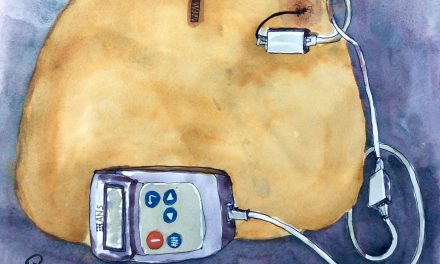Informed consent is an integral part of massage therapy because it represents a contract between you and your patient or client about what is about to happen when the massage begins. Consent is now generally recognized as the basis of the assumption of the risk.
It may seem more relevant to use informed consent in a medical setting, but it is just as valid a tool in a spa setting or a solo practice. This is because most “bad massages” are misunderstandings of intention. At some level, there was a failure to consent to treat or a misunderstanding of what the treatment or massage entailed.
There are many styles of consent that a therapist might use.
- Implied consent: consent that is not verbally given, but by actions.
- Formal consent: a step-by-step process of getting consent like a checklist with specific issues to consent.
- Conversational consent: a more casual style of obtaining consent from your client verbally.
Why is informed consent important?
Informed consent protects both you and the client. The client knows exactly what, when, and how things are supposed to happen, and the therapist is protected from possible risk of angry or injured clients.
While you guide the person you are getting consent from through a process that helps them understand what is about to happen, you are also ensuring that you have a happy customer at the end of the treatment.
Making treatments predictable, reducing miscommunications, equalizing power dynamics, and having clear communication, are at the heart of what a good consent process has to offer.
If you’re in a medical setting, consent to treat is fundamentally important if you’re working with patients with health challenges that present risk. In a spa setting, consent is just as important for ensuring your client walks out the door happy as a returning client who leaves glowing reviews.
Informed consent example
A good informed consent process:
- Makes the client aware of what you are doing (if you are in a medical environment)
- Describes what you are doing including areas you will be touching and time management using words that are not jargon ie- it should be plain language.
- Informs risks and side effects.
- Informs possible alternatives (EX: I would like to use stretching here but it’s possible we just manipulate the skin as well.)
- Informs the intended outcome.
- Informs patients’ or clients’ ability to stop or modify the treatment.
- Asks patients or clients if they have any questions.
- Asks patients or clients if they have consent to proceed.
The way I usually teach informed consent so that it’s memorable is roughly these steps translated into the “who, what, when, where and why’s” of of treatment, followed by the “good, bad, and the ugly (benefits, risks and side effects),” and followed by the ability to ask questions and stop and modify.
Consent must be given technically for each step of the experience, including the forms the patients receive, the assessment you give, and the treatment.
Nearly all consent protocols have the same format, but there are some slight differences depending on what part of the process you are in.
Each stage of your treatment needs consent, but depending on your work environment, you may skip some of them as they are not as relevant or shorten them. Also, you may use a formal format or conversational consent.
Types of consent
There are three common types of informed consent that massage therapists use: implied, formal, and conversational (or verbal).
Implied consent
Implied consent is the loosest form of consent. This type of consent is not given but inferred by actions. You might see this come up in legal settings or lawsuits.
An example would be: You showed up to the gym class; therefore. you consented to what the class involved. This type of consent may be used frequently but do not rely on it. This type of consent can lead to many misunderstandings between practitioner and client.
Formal consent
Formal consent is the very structured version of consent we outlined above. You would discuss with your patient or client the step-by-step process of treatment, hitting each mark, much like reading a disclosure.
Conversational (verbal) consent
Conversational consent will hit the same topics but it is much less structured. As the practitioner, you may move from topic to topic, answering questions and describing the treatment following a more conversational flow often led by your patient.
Experienced practitioners often move to this method of consent once they are very familiar with what needs to be discussed. This type of consent may not stand out to the patient as a process at all. They may just think that the practitioner is a very good communicator.
Health care forms and or liability waivers are standard parts of massage and fitness establishments. If massage therapists are doing their jobs correctly, the person signing them needs to understand precisely what they are signing and why they are being provided.
They represent an essential step in the consent process, especially in environments where you may not have time to talk to your client or patient. Taking the time to explain the forms using a similar consent format as we described, can help establish trust and head off problems before they start.

Make sure your client or patient expects some kind of stretching if it is consented prior to treatment. Photo: Matthew Pardini
Consent for Forms
Health care forms and waivers should be explained to the client.
This consent pattern follows roughly the same pattern outlined above, but it’s specific to the type of paperwork you receive before treatment.
- All information must be explained to the client. What are they looking at?
EX: The first page is your consent form that goes over the process and office policy as far as liability, cancellation policies, and billing. The second form is your health history. Please fill it out to the best of your knowledge.
- You should explain why the information is being collected?
EX: This information is collected to help us treat you better. It is not used for marketing.
- You should explain what will happen to the information.
EX: The information belongs to the patients, but we will keep it on file to give informed consent to treatment.
- That all the information is private and is not shared with anyone other than the therapists.
- Ask if they have any questions.
- Obtain their consent.
Consent for Assessment
Assessment comes with its own process and risks attached. You’ll probably be touching, moving, and questioning the person in front of you. Also, clients and patients may not understand why it’s essential to do an intake.
Over the years, I’ve seen several complaints that the therapist was wasting the massage time by interviewing the client. If consent to assess had been properly given, this kind of misunderstanding is easily avoided.
- Explain the process and the steps of what you are going to do.
EX: So we are going to do a short assessment today that involves me asking some questions, possibly touching you, and watching you do some movements.
- Explain are we conducting the assessment?
EX:This assessment helps me understand why you are coming in today and identify any risks that might be present during treatment. It will also help me know your likes and dislikes as well as design a treatment plan for you.
- Explain what are the risks associated with the assessment?
EX: If we are examining your injury you may experience some pain when we touch or move it.
- Explain what the consequences of not having the assessment are?
EX: We may not be able to treat you appropriately and target what you want. Or you may be injured during treatment because we did not have accurate information.
- Explain their right to stop or modify the assessment.
- Ask them if they have any questions?
- Get their consent to perform the assessment.
Consent for treatment
This should be a brief outline of the massage. Describe the treatment or massage that you are proposing and explain how the time will be managed. All time must be handled up front.
- Explain what body parts will be touched and what techniques will be used in non- medical terms without industry jargon.
EX: Your patient came in five minutes late because of a train delay. “Today we have 55 minutes, we are starting a little late due to your train issue, but I can make up five minutes on the other end so we are not too off.”
EX: “Today we are doing a modified full-body treatment, so I won’t need access to your arms, but I will be touching our back, front of legs, back of legs and glutes, cervical spine, and head.”
I suggest you help the client understand if they are looking for a full-body, upper body, only lower body or just a spot treatment. They may not understand the possibilities.
EX: “Because you have what seems to be a stiff neck, we will be using very gentle treatment. It will be mostly gentle skin depth pressure and range of motion rather than traditional massage.”
- Explain to your client what the risks, side effects and benefits of today’s treatment or massage might be.
EX: “I choose this for you because based on what you explained, I think this is the best way to help you feel more comfortable based on….”
“Because we are using that skin pulling technique, you can experience uncomfortable skin stretch or red marks on the skin.”
- Give some possible alternatives to your massage recommendations or what you have proposed.
EX: if you do not like the deep pressure we could use more gentle compressions.
- Let them know that at any point in the treatment they can stop or modify the massage, they just need to let you know.
- Ask if they have questions about what you have explained.
- Obtain their consent to treat.
The treatment consent is naturally the hardest as it changes based on what you are treating and client behavior, while the other types of consents are fairly static.
Let’s fill in this example to help you get started.
For today’s treatment, we have __________ minutes.
We will be working generally on _________________ and specifically on __________________, so I will need to touch ______________ (possibly explain garment removal and draping).
I am going to use ______________ which is for/feels like _____________, and ______________________ which is for/feels like _____________ and possibly ________________ in the treatment.
I hope that this treatment will make you feel (or help you) _______________ .
You should know that during the treatment or after you may experience _______________________.
I am going to be very careful and check in with you but there is always the risk that ______________________ could happen.
We can stop anytime or change the treatment so please let me know about your comfort and the depth of the massage.
Do you have any questions? Great! Are we okay to move forward?
What if a patient does not consent?
If you reach the end of your process and your patient or client does not consent, that is fantastic. You are having clear communication and you know to start over and try to find some common ground so that you can move forward on agreeable terms.
Remember consent is a process by which we communicate. Iit’s not just permission to perform the task. At this point, you may propose another treatment, refer out, or discharge the client. The important thing is you both know exactly where you stand.

I once had to field an angry call from a patient who was coming in for neck pain. The therapist performed the assessment and proceeded with the treatment.
After the massage, the woman was sure her neck had not been treated. This, of course, made her upset.
I discussed it with the therapist and she was shocked because she had mostly treated her neck. How had these two people had two separate experiences?
Well the therapist in question had treated the patients neck while the client was face down. The client had never had cervical massage while she was in prone before, so her perception was that it was never done.
Because it had not been explained to her, she did not know what was happening, nor was she given the opportunity to say, “I prefer not to be treated face down, I have only had treatment face up and I am comfortable that way.”
This is a consent fail and this is a very mild one. People can be hurt or worse from a failure of consent.
Is informed consent required in all U.S. states?
Each U.S. state has its own laws regarding how massage therapy is operated and taught. Therefore, informed consent is not consistent across all 50 states.
Even if it’s not required in your state, it can help you have clear communication, mitigate legal risk, and make a more satisfied patient or client.
This is also just a rough outline of areas that should be covered. Some consent processes go much deeper. Ideally, you want to find the balance between safe effective communication and time management. This will seem like a lot to get done at first, but over time, it gets easier and shorter as you get better at it.

Beret Loncar, RMT, LMT
Beret Loncar started her career as a massage therapist in 2006, graduating in Ontario, Canada as a registered massage therapist. Much of her work has been informed by her active lifestyle. Over the years she has been a runner, scuba diver, cyclist, CrossFitter, and has even been a competitive showjumper. In 2011, she moved back to her home city New York City and set up her current clinic, Body Mechanics Orthopedic Massage. She now practices as a licensed massage therapist in NYC, is a CEU provider, and a C-IAYT Yoga Therapist.






